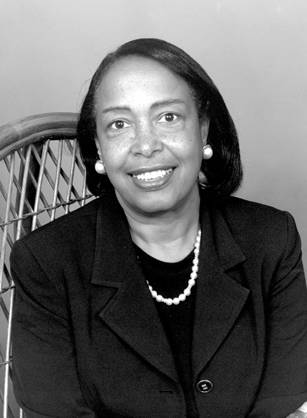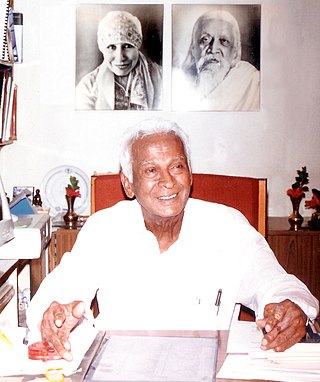Related Research Articles

Ophthalmology is a surgical subspecialty within medicine that deals with the diagnosis and treatment of eye disorders. A former term is oculism.
Frederick Cossom Hollows was a New Zealand–Australian ophthalmologist who became known for his work in restoring eyesight for people in Australia and many other countries through initiatives such as The Fred Hollows Foundation.

Eye surgery, also known as ophthalmic surgery or ocular surgery, is surgery performed on the eye or its adnexa. Eye surgery is part of ophthalmology and is performed by an ophthalmologist or eye surgeon. The eye is a fragile organ, and requires due care before, during, and after a surgical procedure to minimize or prevent further damage. An eye surgeon is responsible for selecting the appropriate surgical procedure for the patient, and for taking the necessary safety precautions. Mentions of eye surgery can be found in several ancient texts dating back as early as 1800 BC, with cataract treatment starting in the fifth century BC. It continues to be a widely practiced class of surgery, with various techniques having been developed for treating eye problems.

An Intraocular lens (IOL) is a lens implanted in the eye usually as part of a treatment for cataracts or for correcting other vision problems such as short sightedness and long sightedness, a form of refractive surgery. If the natural lens is left in the eye, the IOL is known as phakic, otherwise it is a pseudophakic lens. Both kinds of IOLs are designed to provide the same light-focusing function as the natural crystalline lens. This can be an alternative to LASIK, but LASIK is not an alternative to an IOL for treatment of cataracts.

Cataract surgery, also called lens replacement surgery, is the removal of the natural lens of the eye that has developed a cataract, an opaque or cloudy area. The eye's natural lens is usually replaced with an artificial intraocular lens (IOL) implant.
Sir Nicholas Harold Lloyd Ridley was an English ophthalmologist who invented the intraocular lens and pioneered intraocular lens surgery for cataract patients.
An eye care professional is an individual who provides a service related to the eyes or vision. It is any healthcare worker involved in eye care, from one with a small amount of post-secondary training to practitioners with a doctoral level of education.

Patricia Era Bath was an American ophthalmologist and humanitarian. She became the first female member of the Jules Stein Eye Institute, the first woman to lead a post-graduate training program in ophthalmology, and the first woman elected to the honorary staff of the UCLA Medical Center. Bath was the first African-American to serve as a resident in ophthalmology at New York University. She was also the first African-American woman to serve on staff as a surgeon at the UCLA Medical Center. Bath was the first African-American woman doctor to receive a patent for a medical purpose. A holder of five patents, she founded the non-profit American Institute for the Prevention of Blindness in Washington, D.C.

Govindappa Venkataswamy, popularly known as Dr V., was an Indian ophthalmologist who dedicated his life to eliminate needless blindness. He was the founder and former chairman of Aravind Eye Hospitals. He is best known for developing a high quality, high volume, low-cost service delivery model that has restored sight to millions of people. Since inception, Aravind Eye Care System has seen over 55 million patients, and performed over 6.8 million surgeries. Over 50% of the organisation's patients pay either nothing or highly subsidised rates. Its scale and self-sustainability prompted a 1993 Harvard Business Case Study on the Aravind model.
Suseela Prabhakaran is an Indian ophthalmologist and chief ophthalmic surgeon at Divya Prabha Eye Hospital in Trivandrum, India. She started her career as a lecturer in ophthalmology in the Department of Medical Education at the state government of Kerala.

Sanduk Ruit is an ophthalmologist from Nepal who was involved to restore the sight of over 180,000 people across Africa and Asia using small-incision cataract surgery.
Howard V. Gimbel FRCSC, AOE, FACS, CABES, is a Canadian ophthalmologist, university professor, senior editor, and amateur musician. He is better known for his invention, along with Thomas Neuhann, of the continuous curvilinear capsulorhexis (CCC), a technique employed in modern cataract surgery.

Eric John Arnott, MA, FRCS, FRCOphth was a British ophthalmologist and surgeon who specialized in cataracts, a condition which in many parts of the world still remains the principal cause of blindness. He is known for inventing new surgical techniques for treatment of various ophthalmological disorders, and received professional awards for his contributions.
David J. Apple was an ophthalmic pathologist who conducted research on the pathology of intraocular lens complications as well as ophthalmic surgery in general. He was a medical historian and biographer of Sir Harold Ridley, the inventor of the intraocular lens (IOL).
He often stated that Harold Ridley changed the world. What we can say about David Apple is that he vastly improved the world that Harold Ridley changed
Raymond Mark Stein, MD, FRCSC, DABO, is a Canadian ophthalmologist. He practices refractive and cataract surgery. He is the medical director of the Bochner Eye Institute in Toronto, Ontario and Chief of Ophthalmology at the Scarborough General Hospital.
Tilganga Institute of Ophthalmology, formerly called the Tilganga Eye Centre, in Nepal is the implementing body of the Nepal Eye Program, a non-profit, community based, non-government organization launched in 1992. It was founded in part by renowned ophthalmologist and cataract surgeon Sanduk Ruit. The current facility was opened in 1994. The World Health Organization recognized Tilganga Institute of Ophthalmology as a WHO Collaboration Centre of Ophthalmology in 2019. In Nepal, it is the second institute, and first institute in the field of ophthalmology to receive this designation. It provides various sub speciality services of Ophthalmology such as Cornea, Cataract & IOL, Glaucoma, Oculoplastic, Lacrimal and Ocular Oncology services, Pediatric Ophthalmology and Strabismus services, Vitreo-Retina, Uvea, Neuro ophthalmology and Optometry services.
Noshir Minoo Shroff is an Indian ophthalmologist notable for pioneering intraocular lens implantation surgery in India. He was awarded the Padma Bhushan in 2010 by the Indian government for his services to medicine.
Keiki R. Mehta, an Indian ophthalmologist, medical researcher and writer, is considered by many as the father of Phacoemulsification in India. He is the Chief Surgical and Medical Director at Mehta International Eye Institute, a Mumbai-based specialty eye hospital founded by him. He is known to be the first surgeon to perform a Radial keratotomy in India and is credited with the development of the first soft eye implant in the world, and the Keiki Mehta BP Valve Glaucoma Shunt, a medical implant used in the treatment of neovascular‚ congenital and uveitic glaucoma. He is a recipient of several honours including the Grand Honors Award of the National Eye Research Foundation, Chicago and the Triple Ribbon Award of the American Society for Cataract and Refractive Surgery. The Government of India awarded him the fourth highest civilian honour of the Padma Shri, in 2008, for his contributions to Medicine.
The Myanmar Eye Care Project (MECP) is focused on improving the delivery of critical eye care services to at-risk populations in Myanmar. Founded in 2002 and staffed entirely by ophthalmologists, it aims to end blindness in Myanmar. Myanmar is one of the poorest countries in Southeast Asia and has the highest rate of blindness in the world. Working with partners and a network of providers, MECP operates clinics that provide routine eye care, acute treatment, and surgeries to Myanmar's poor rural populations. MECP also builds eye care infrastructure in rural communities, trains indigenous physicians and nursing staff, and provides equipment.
Access to cataract surgery is very variable by country and region. Even in developed countries availability may vary significantly between rural and more densely populated areas.
References
- ↑ Kristof, Nicholas (21 November 2020). "Opinion | Choose a Gift That Changes Lives". The New York Times. ISSN 0362-4331 . Retrieved 10 November 2021.
- ↑ "Causes of blindness and visual impairment". World Health Organization. Archived from the original on 5 June 2015. Retrieved 19 February 2009.
- 1 2 3 "Eye opening". 21 August 2017.
- ↑ Sharita Hanley, Whitney Seltman (9 November 2022). "Aphakia overview".
- 1 2 Handwerk, Brian (26 September 2003). "In Nepal, Doctors Cure Blindness Among Poor". National Geographic. Archived from the original on 10 September 2005. Retrieved 24 July 2014.
- ↑ "Tilganga Institute of Ophthalmology". Tilganga.org. 18 September 2011. Archived from the original on 26 December 2013. Retrieved 24 July 2014.
- ↑ "ABC Radio National - Health Report Transcript". Australian Broadcasting Corporation . Archived from the original on 24 June 2007. Retrieved 7 June 2011.
- ↑ "Dr. Sanduk Ruit's story". 2020.
- ↑ Sean Zimmerman-Wall (17 March 2010). "Dr. Geoffrey Tabin- Giving Eyesight To The Blind".
- 1 2 3 4 "Geoffrey Craig Tabin, MD's Profile | Stanford Profiles" . Retrieved 17 January 2019.
- ↑ "American Academy of Ophthalmology Announces Recipients of Outstanding Humanitarian Service Award". Archived from the original on 12 February 2011. Retrieved 7 June 2011.
- ↑ David Oliver Relin (18 June 2013). Second Suns: Two Doctors and Their Amazing Quest to Restore Sight and Save Lives.